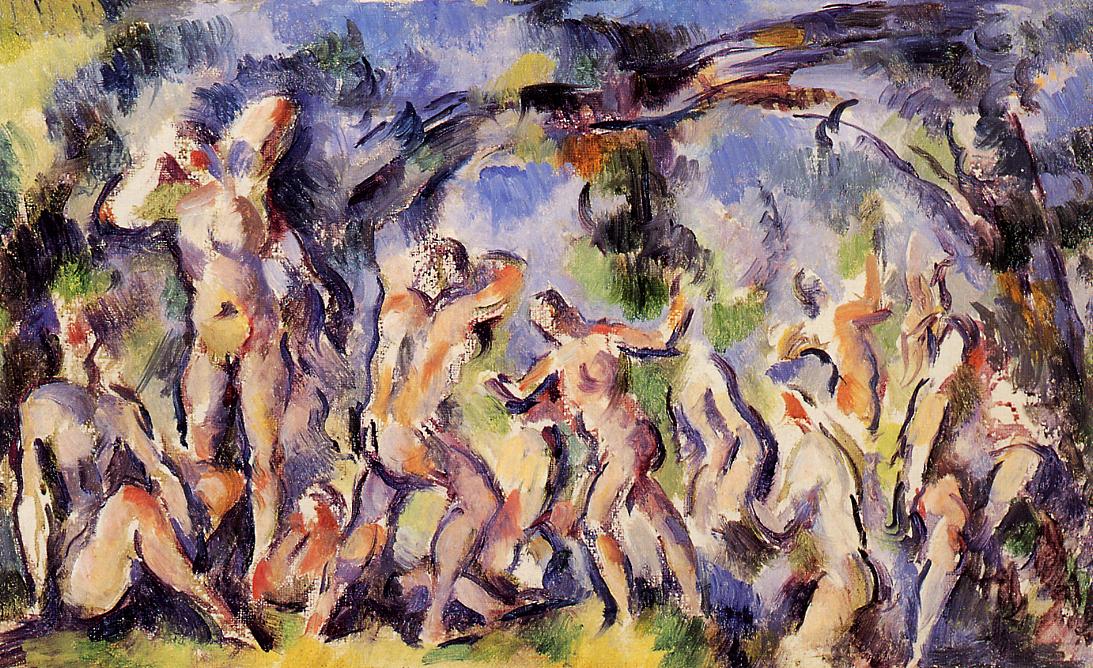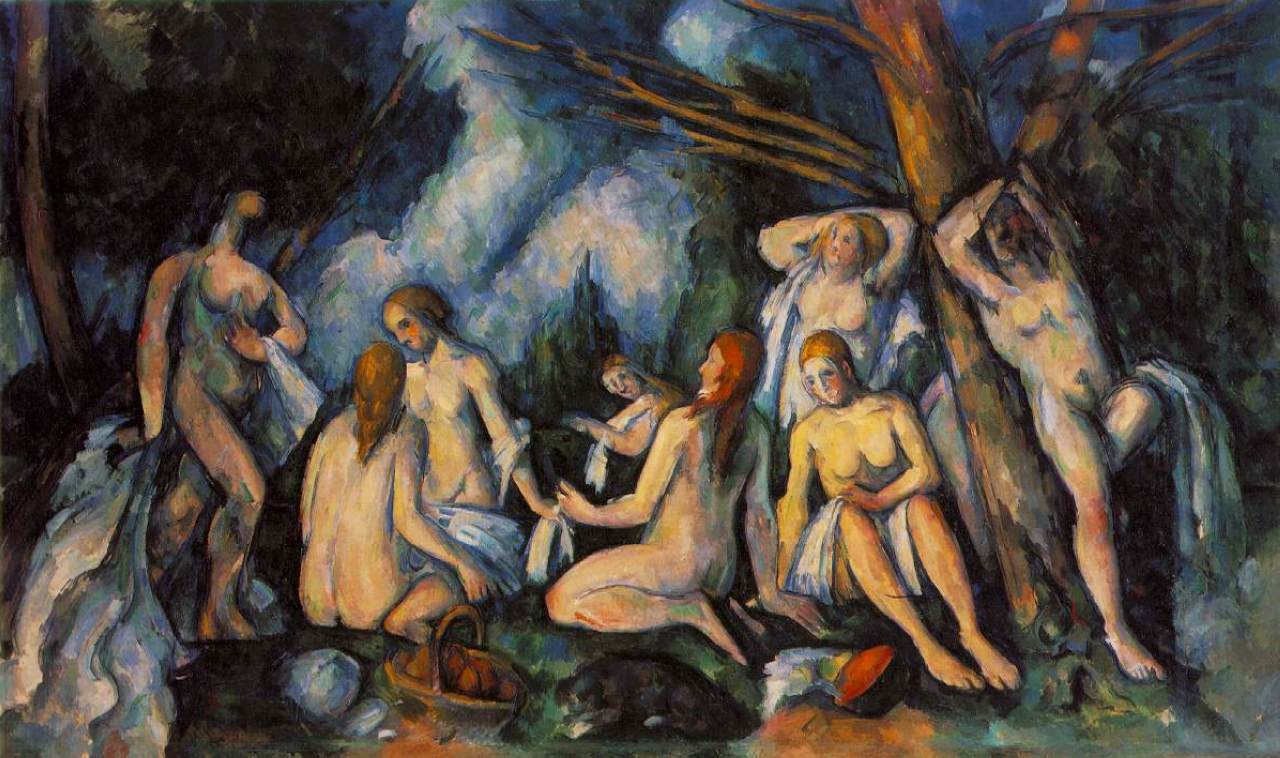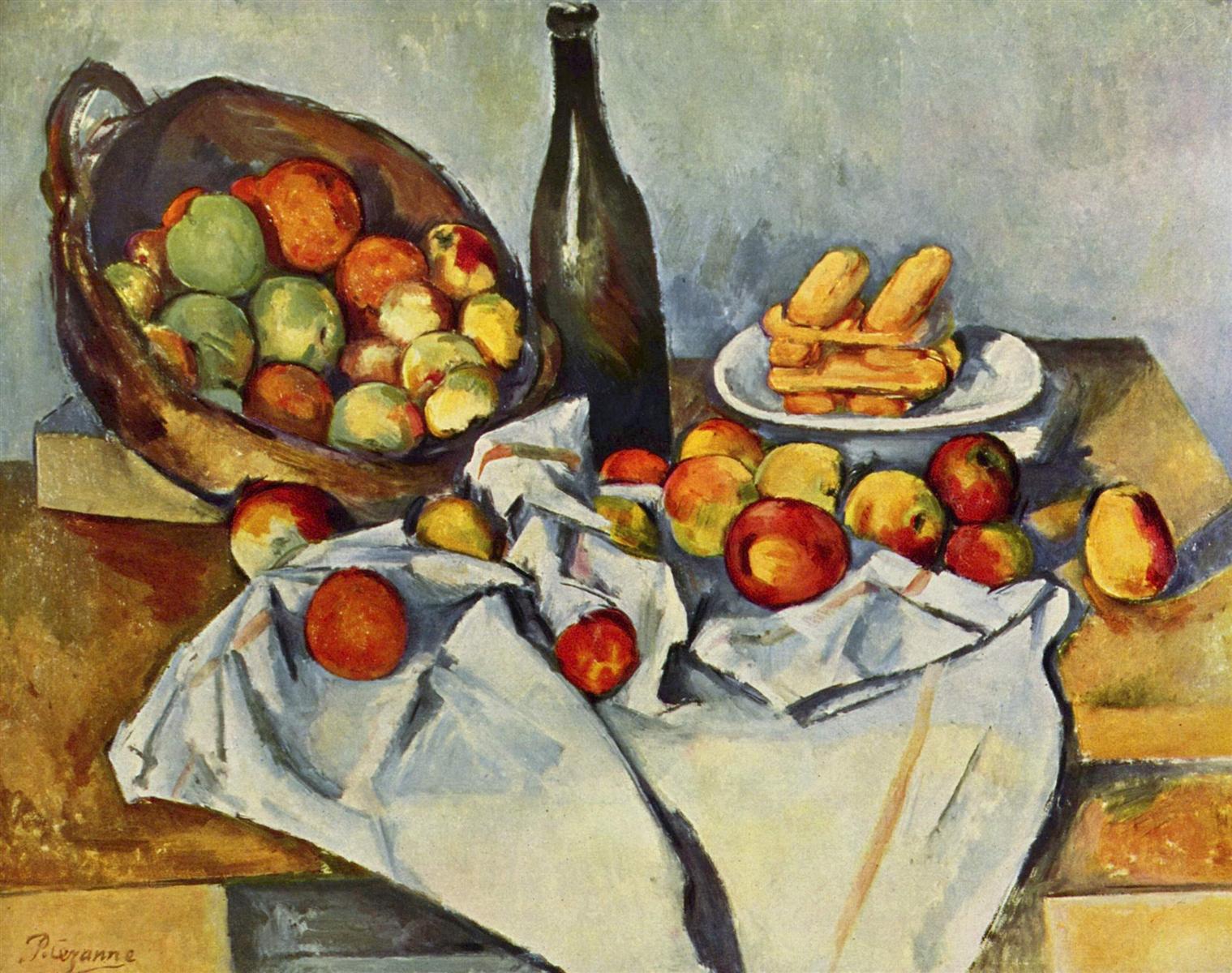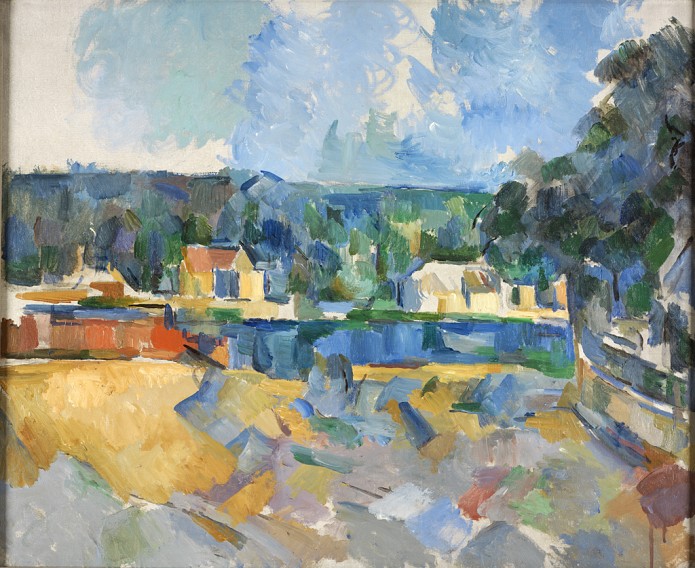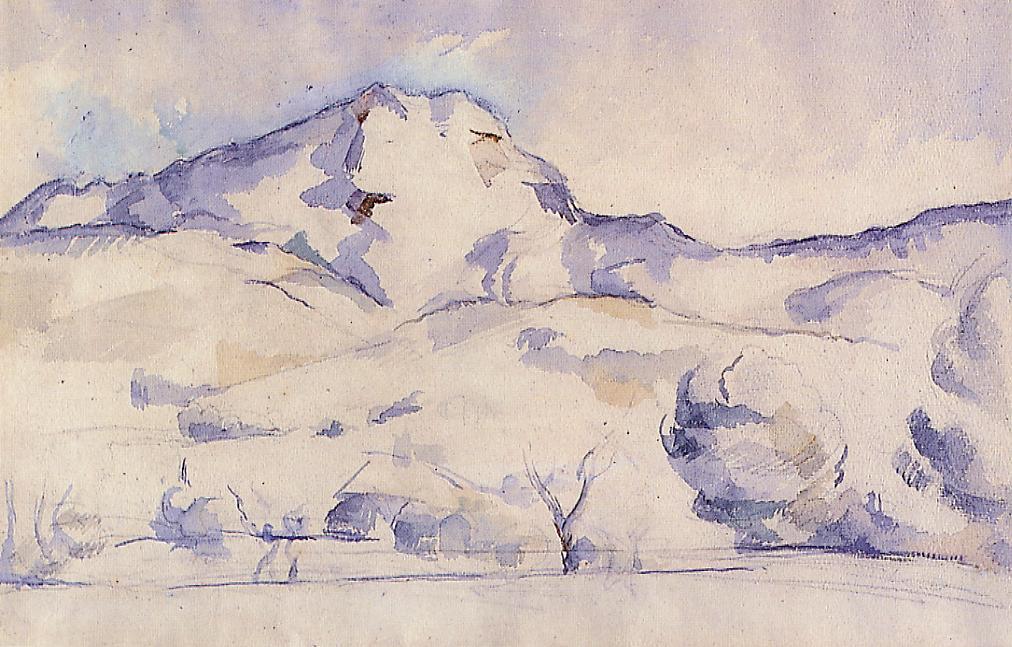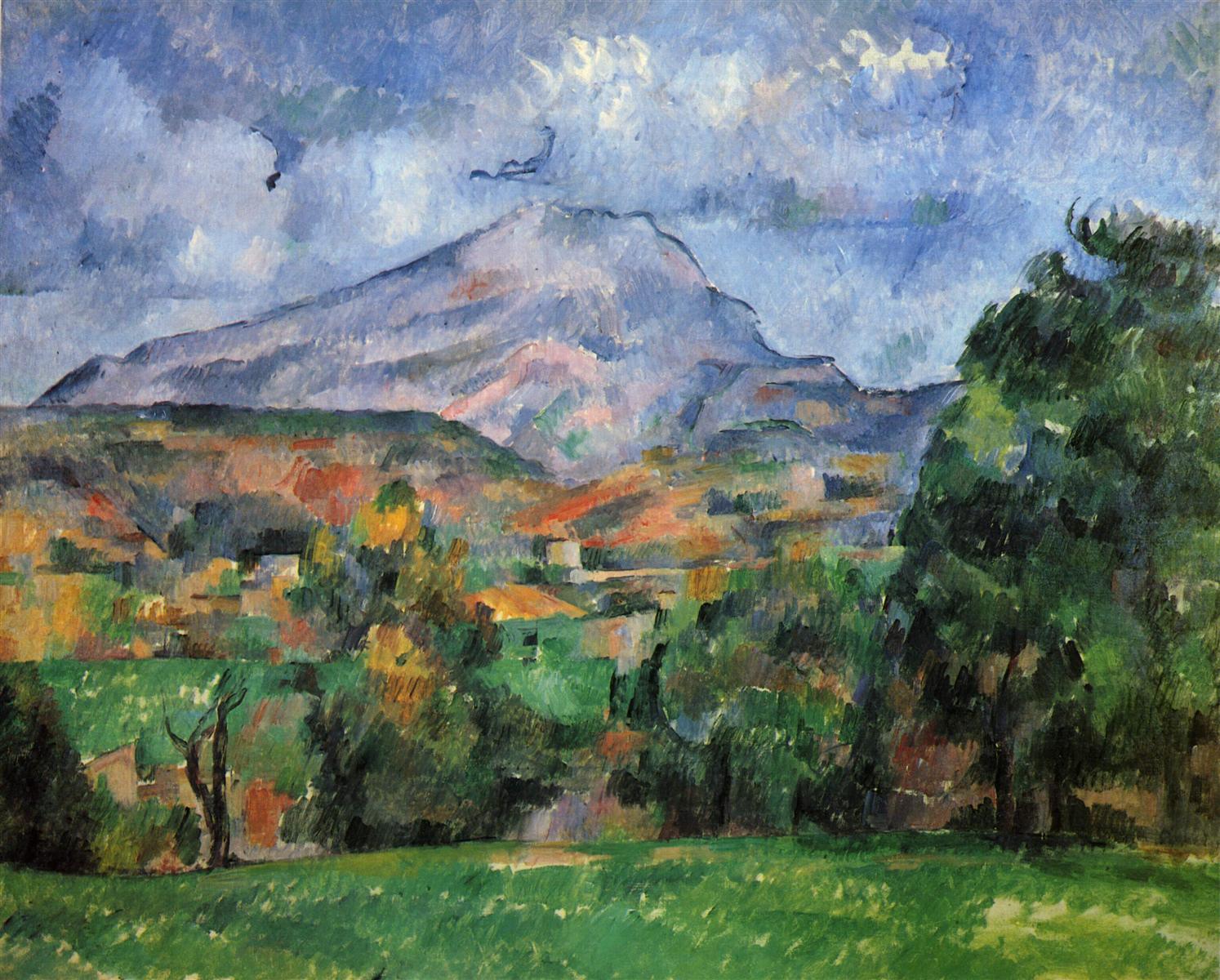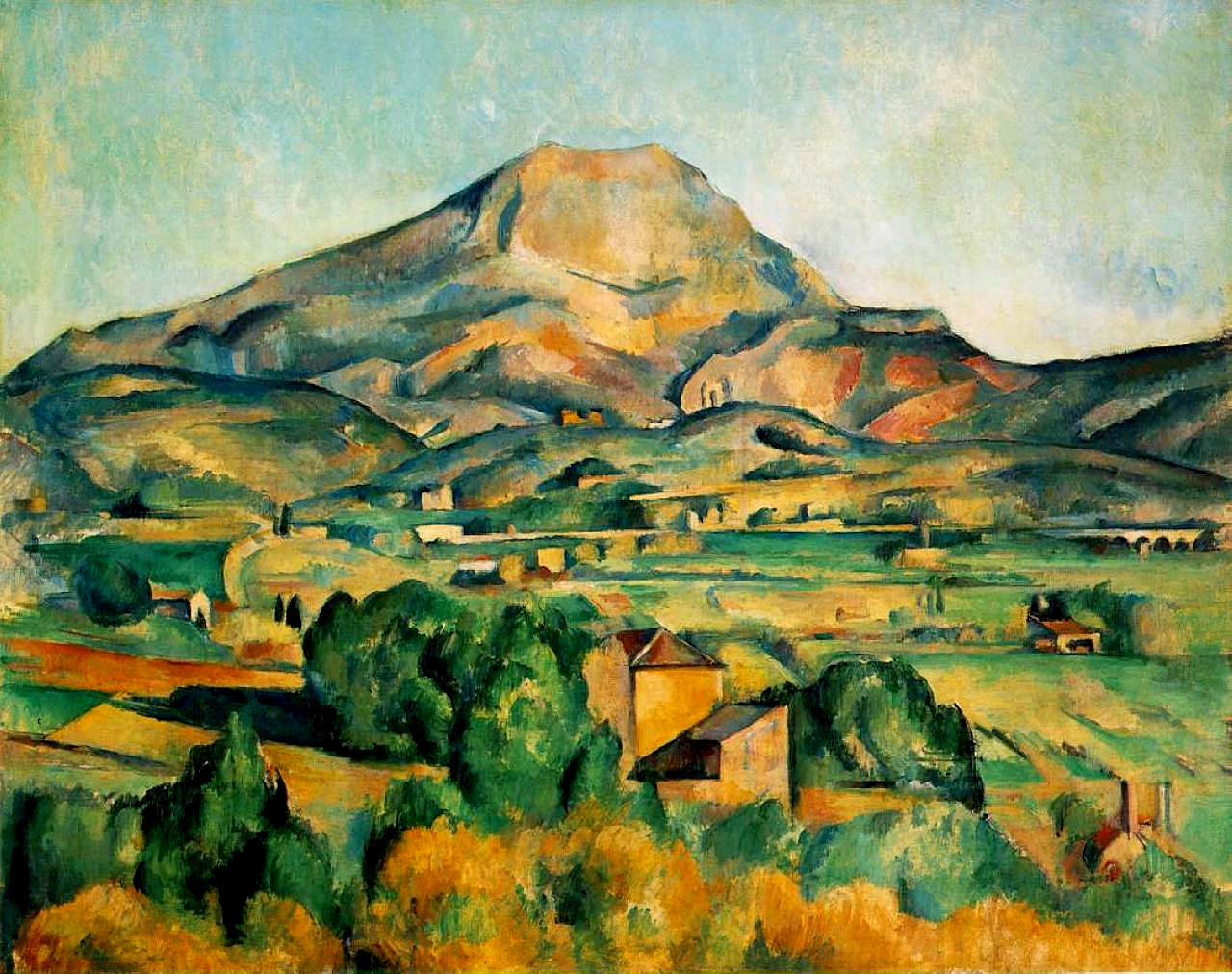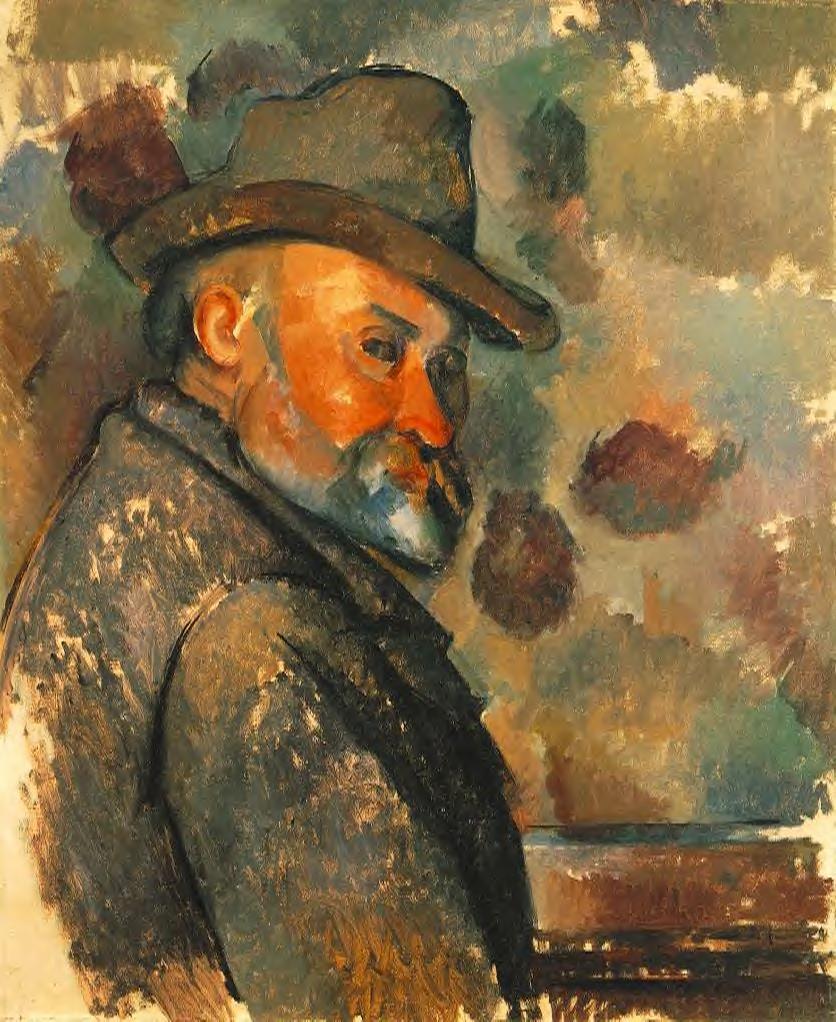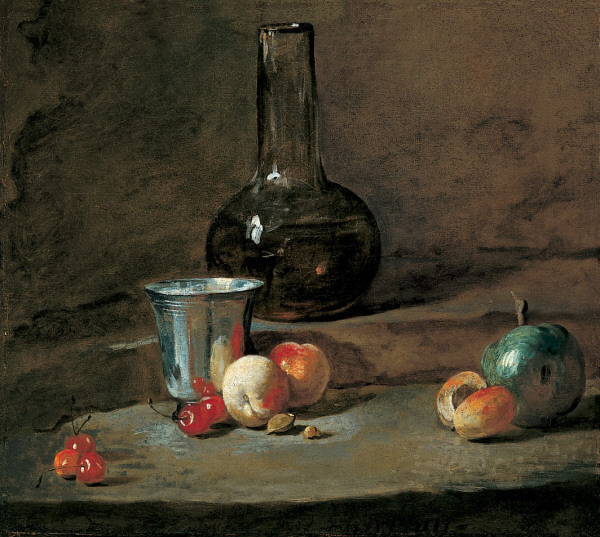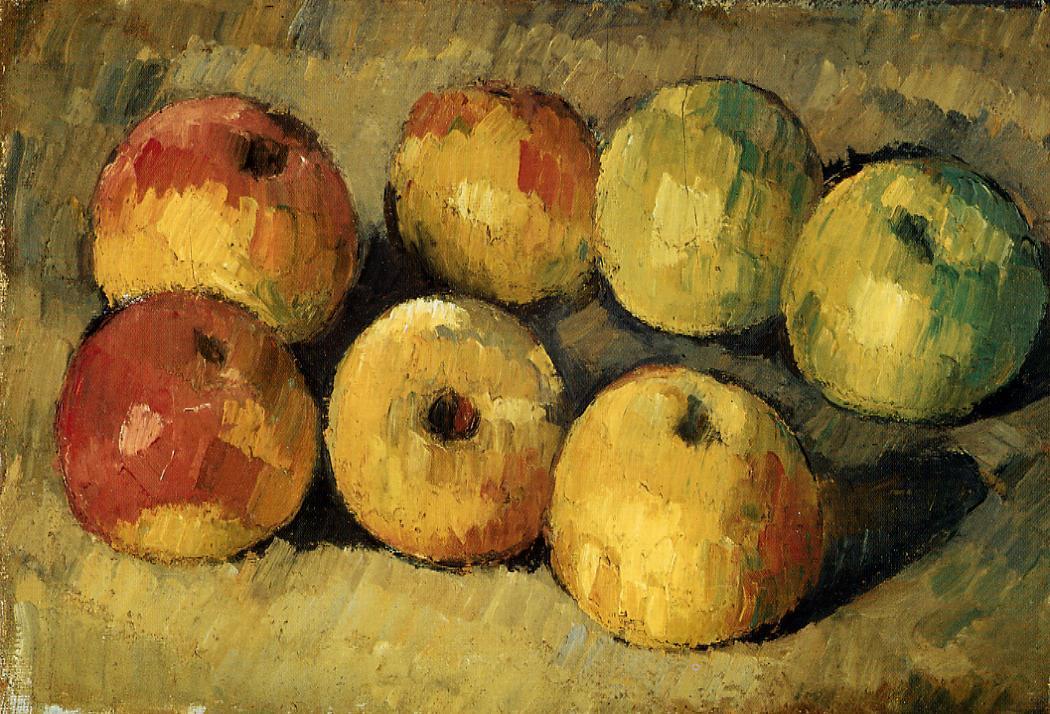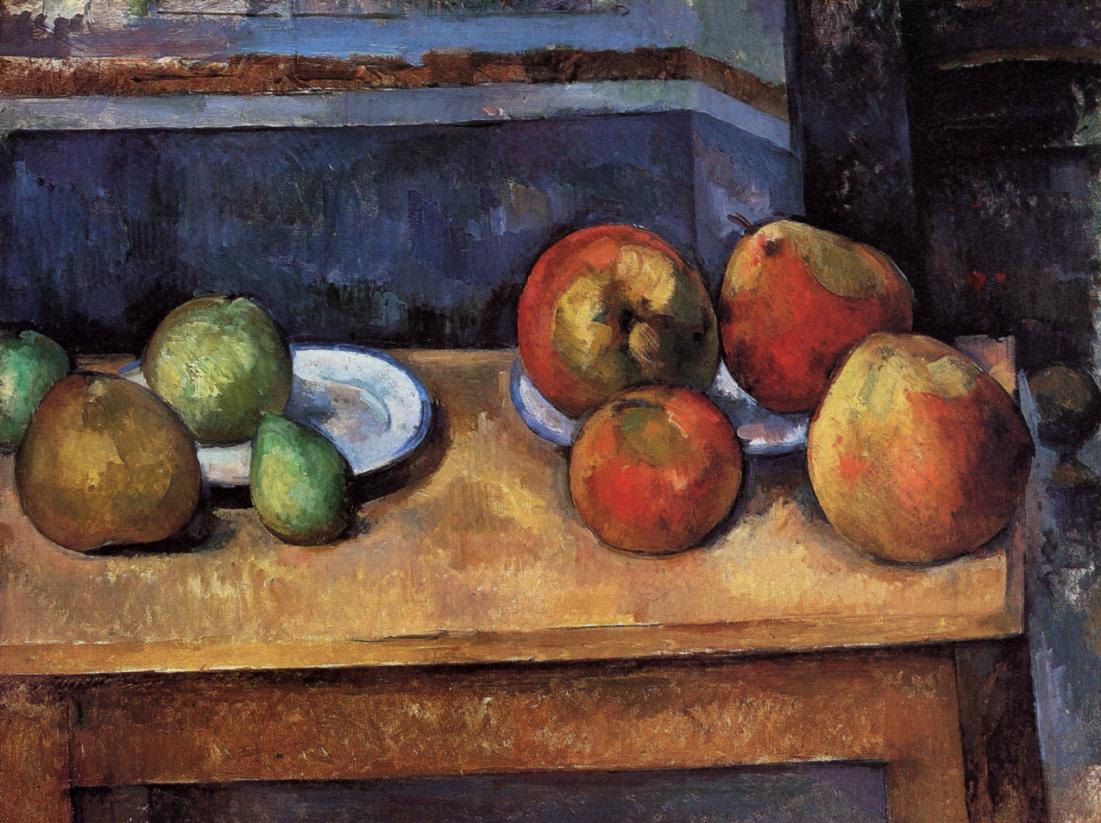But it takes a long, long time. When I remember the puzzlement and insecurity of one’s first confrontation with his work, along with his name, which was just as new. And then for a long time nothing, and suddenly one has the right eyes …
Rainer Maria Rilke to Clara Rilke
Here we are, finally: the letter that inspired this program.
The right eyes: suddenly seeing what has been invisible before. The miracle of an insight born out of chaos, confusion, puzzlement.
October 10, 1907
Meanwhile I’m still going to the Cézanne room, which, I suppose, you can somewhat imagine by now, after yesterday’s letter. I again spent two hours in front of particular pictures today; I sense this is somehow useful for me.
Would it be revealing for you?
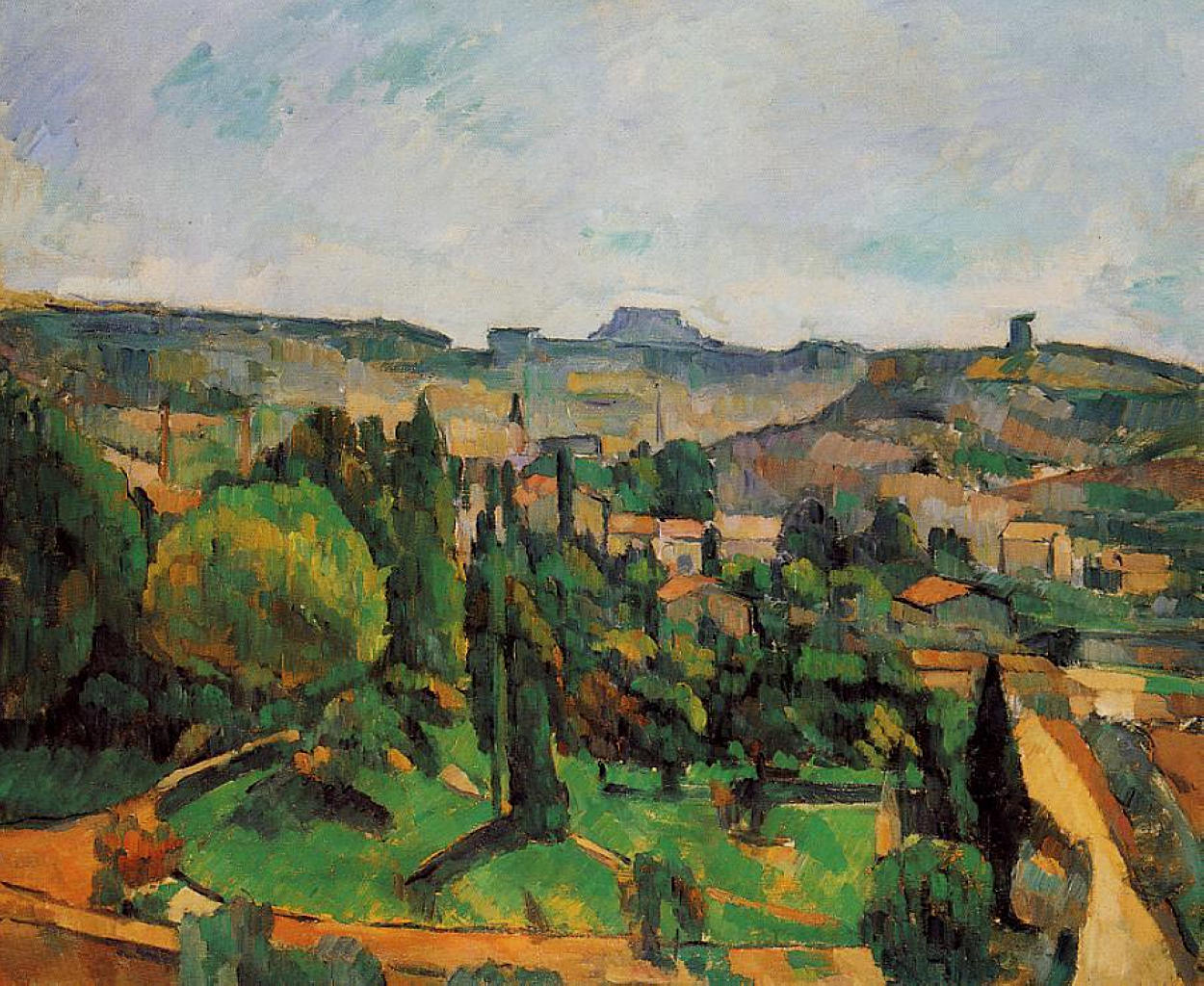
I can’t really say it in one breath. One can really see all of Cézanne’s pictures in two or three well-chosen examples, and no doubt we could have come as far in understanding him somewhere else, at Cassirer’s for instance, as I find myself advancing now.
But it takes a long, long time.
When I remember the puzzlement and insecurity of one’s first confrontation with his work, along with his name, which was just as new. And then for a long time nothing, and suddenly one has the right eyes …
I would almost prefer, if you should be able to come here some day, to lead you to the Déjeuner sur l’herbe, to this female nude seated among the green mirrorings of a leafy wood, every part of which is Manet, shaped by an indescribable expressive capacity which suddenly, after many unavailing attempts, came about, was there, succeeded.
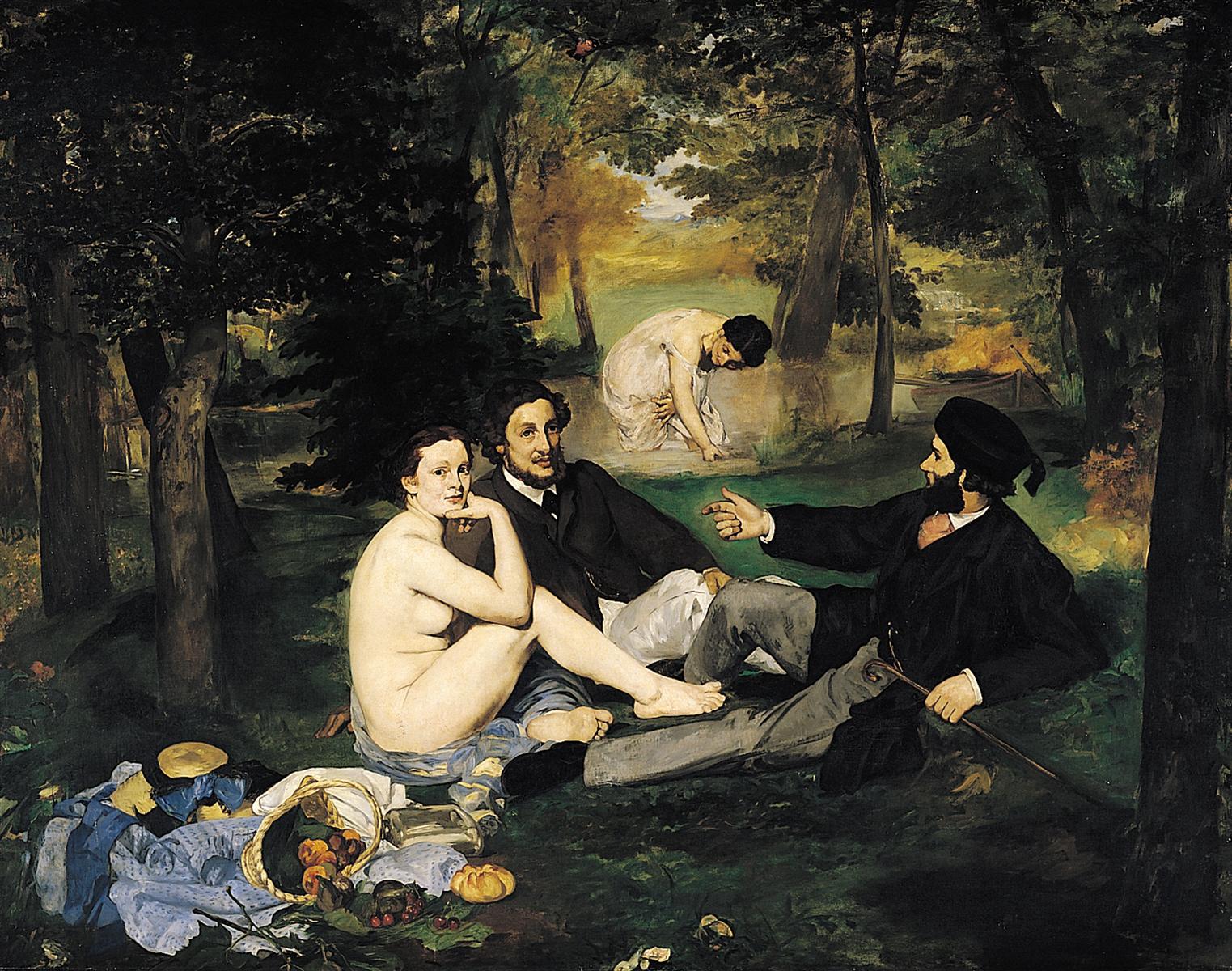
All his means were released and dissolved in succeeding: you’d almost think no means were used at all. I stood in front of it for a long time yesterday.
But it’s valid, the miracle, only for one person, every time; only for the saint to whom it happens.
Cézanne had to start all over again, from the bottom…

THE WORK
Rilke writes:
But it’s valid, the miracle, only for one person, every time; only for the saint to whom it happens. Cézanne had to start all over again, from the bottom…
I wonder whether this is really true. Or, to be more precise, in which sense it is true, and to what extent.
How does it align with Rilke’s own earlier observations on the evolution of painting insights?
Every artist must follow their unique experience of reality all the way to the end. This is the only path to a universally valid insight, an insight that EXPANDS human vision and consciousness: through this artist, in their artwork, humanity sees something it couldn’t see before.
This miracle, then, is valid for all of us, the spectators and fellow artists alike.
And even though every single one of us has to follow the path of our own unique experience, but do we really start “from the bottom”?
Do we not start with the sense of vision expanded and transformed by others?
SEEING PRACTICE: Cézanne radical newness
Above is another of Cézanne’s painting that shows us his singular vision in the process of its emergence. Can we still experience Rilke’s puzzlement? Can we still see how radically new Cézanne’s vision was at the time?
And he was just studying the nature, just painting what he really saw, just following the path of his experience all the way to the end.
